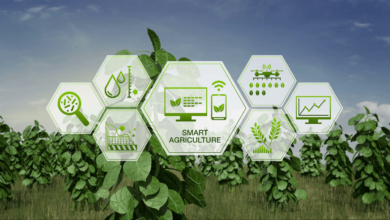Introduction to Genetic Engineering in Agriculture
The direct altering of an organism’s genes via biotechnology is known as genetic engineering. A relatively modern field, it was officially established in the 1970s following years of study in genetics and molecular biology.
-
Exploring the Connection Between Genetic Engineering and Agriculture
Our planet’s population is skyrocketing, and with it, the demand for food. Traditional farming methods can only sometimes keep up. Enter genetic engineering. By tweaking the genetic makeup of crops, scientists can enhance traits like growth rate and resistance to pests, shaping the future of our food supply.
Methods of Genetic Engineering
There are multiple methods to engineer genes, each with its unique benefits.
Custom DNA sequences may be produced by scientists using recombinant DNA technology. To make genetically modified (GM) crops with the properties they want, they could blend the DNA of several creatures.
A more recent technique, the CRISPR-Cas9 system, functions like a set of molecular scissors. It precisely edits genes, adding, removing, or changing parts of the DNA sequence.
Benefits of Genetic Engineering in Agriculture
Genetic engineering offers several advantages in agriculture. It can drastically increase crop yields; a must in our rapidly growing world. Besides, it allows for creation of crops with enhanced nutritional content, like vitamin-fortified rice.
That’s not all, however. Additionally, genetic engineering makes crops disease and insect resistant, lowering the need for toxic pesticides.
-
Controversies and Ethical Issues Surrounding Genetic Engineering
Despite its benefits, genetic engineering sparks controversies. Critics express concerns over long-term effects on human health and the environment. Ethical issues also arise, with debates around tampering with nature’s course and potential bioweapon production.
-
Case Studies: Success Stories of Genetic Engineering in Agriculture
Despite controversies, many success stories highlight the potential of genetic engineering. Golden Rice, a GM crop fortified with Vitamin A, has helped combat vitamin A deficiency in developing countries. Another success story is Bt cotton, a pest-resistant crop, which has improved yields and farmers’ income in various parts of the world.
The Future of Genetic Engineering in Agriculture
Genetic engineering gives promise for effective and sustainable food production as it advances. Food shortages may soon be history, thanks to the development of technologies like gene drives and synthetic biology.
Conclusion
Genetic engineering in agriculture can potentially revolutionize how we produce and consume food. While the controversies are authentic and valid, the benefits and future possibilities are immense. As technology progresses, harnessing genetic engineering’s power responsibly and ethically is crucial to securing a sustainable food future for all.
FAQS for Genetic Engineering in Agri
How does genetic engineering benefit agriculture?
Crops may be made more pest and disease resistant, with improved nutrition and higher agricultural yields thanks to genetic engineering.
What are the controversies around genetic engineering in agriculture?
Critics raise concerns about potential long-term effects on human health and the environment. Ethical issues include tampering with nature's course and potential misuse for creating bioweapons.
What are some examples of genetically modified crops?
Examples include Golden Rice fortified with Vitamin A and Bt cotton, which is resistant to pests.
What is the future of genetic engineering in agriculture?
With new technology promising sustainable and effective food production, genetic engineering is still advancing.
Rate our Article(Genetic Engineering in Agriculture: A Revolution in Food Production)How much do you like our Article



